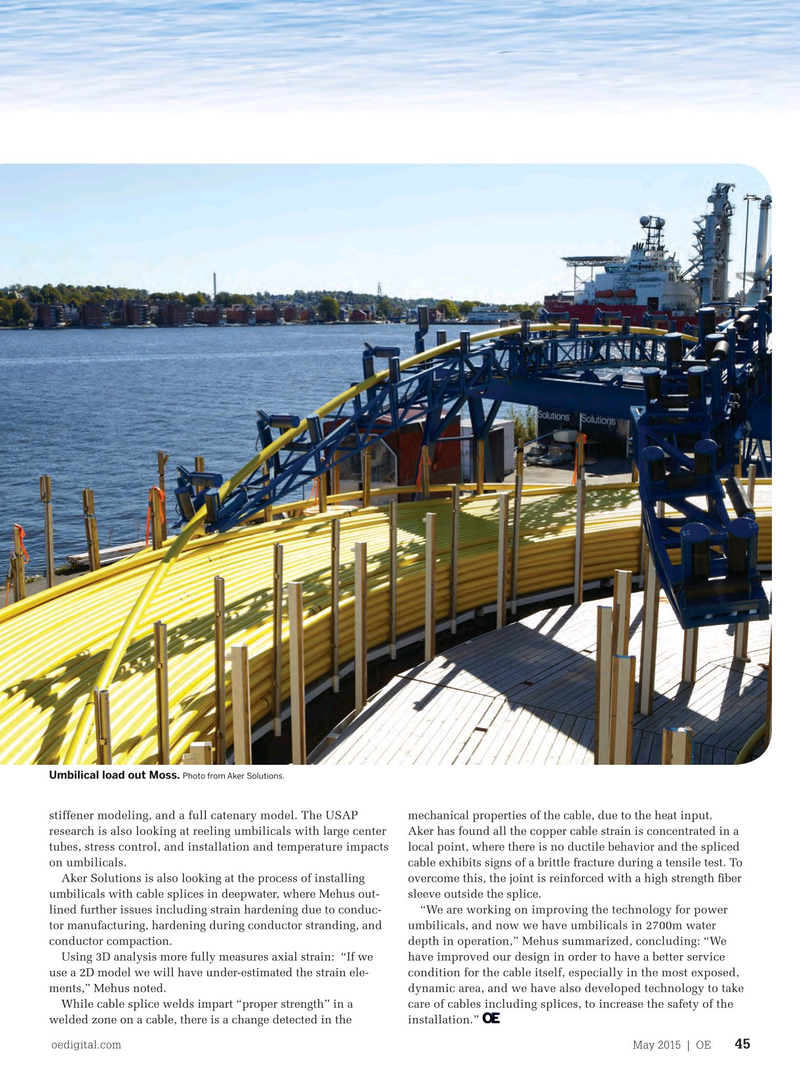
Page 43: of Offshore Engineer Magazine (May/Jun 2015)
Read this page in Pdf, Flash or Html5 edition of May/Jun 2015 Offshore Engineer Magazine
Umbilical load out Moss. Photo from Aker Solutions.
stiffener modeling, and a full catenary model. The USAP mechanical properties of the cable, due to the heat input. research is also looking at reeling umbilicals with large center Aker has found all the copper cable strain is concentrated in a tubes, stress control, and installation and temperature impacts local point, where there is no ductile behavior and the spliced on umbilicals. cable exhibits signs of a brittle fracture during a tensile test. To
Aker Solutions is also looking at the process of installing overcome this, the joint is reinforced with a high strength ? ber umbilicals with cable splices in deepwater, where Mehus out- sleeve outside the splice.
lined further issues including strain hardening due to conduc- “We are working on improving the technology for power tor manufacturing, hardening during conductor stranding, and umbilicals, and now we have umbilicals in 2700m water conductor compaction. depth in operation,” Mehus summarized, concluding: “We
Using 3D analysis more fully measures axial strain: “If we have improved our design in order to have a better service use a 2D model we will have under-estimated the strain ele- condition for the cable itself, especially in the most exposed, ments,” Mehus noted. dynamic area, and we have also developed technology to take
While cable splice welds impart “proper strength” in a care of cables including splices, to increase the safety of the welded zone on a cable, there is a change detected in the installation.” oedigital.com May 2015 | OE 45 044_OE0515_Feature3_John_v2em.indd 45 4/19/15 11:26 PM

 42
42

 44
44